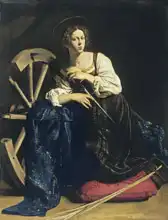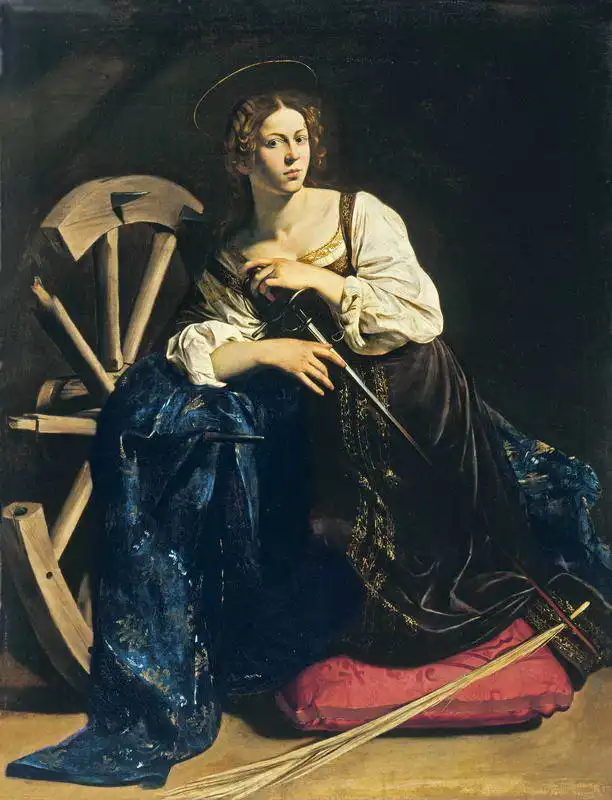About this finishing
Print. The image is printed on the top quality 10-ink HP Z9PS printer on HP matte 270 g / m2 paper. You can choose any size to an accuracy of 1 cm. A margin of 5 cm around the image is added to the size of the motif.


You can find a detailed description about our finishings
here.
Saint Catherine of Alexandria
Date:
ca. 1598-1599Location:
Museo Thyssen-Bornemisza, Madrid, SpainThis painting was most likely commissioned in Rome by
Caravaggio's initial patron, Cardinal Francesco Maria del Monte. The figure of St. Catherine, assumed to be the celebrated courtesan Fillide Melandroni, is portrayed in a remarkably natural
pose . Adorned in regal attire reminiscent of a princess and positioned on a cushion, she engages the viewer while being surrounded by the symbols of her martyrdom: the breaking wheel, the sword used in her beheading, and the martyr's palm. Caravaggio's distinctive use of dramatic lighting in this scene creates a chiaroscuro effect, a hallmark of his style. His innovative approach to light and volume, exemplified in this canvas, had a significant impact on the art world in Italy and across Europe.
Prevailing color of this fine art print is dark and its shape is portrait. This art piece is located in Museo Thyssen-Bornemisza, Madrid, Spain. This image is printed on demand - you can choose material, size and finishing.
Caravaggio (Merisi Michalengelo) (1571-1610). Italian
Baroque painter, who in his short life was significantly influenced by Baroque painting. Born to a family of architects in Caravaggio, he was an unwary adventurer who liked teasing and toying with fate. In his early works, he preferred
realism. He worked with light and shadow, combining natural and architectural elements. He captured dramatic scenes (and his images are very sensational) by utilising hyperrealism and an impressive use of light and shadow. An intense light side, which he started using, helped him add intensity to colours and link the composition into one unit. Light, intense colours, and choice of motifs (often with the presence of death) are the cornerstones of his work, which indelibly influenced the history of art.


